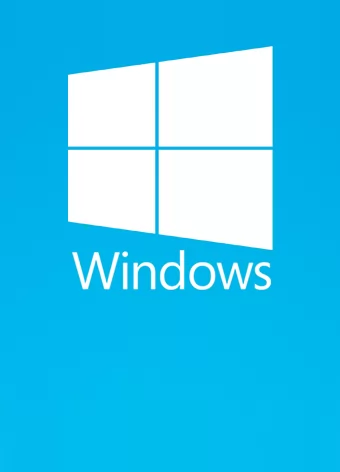
Windows 10: disponibili i fix per l'April 2018 Update e versioni precedenti
Microsoft non sta lavorando solo sul prossimo major update per Windows 10, l'April 2019 Update, ma anche sugli aggiornamenti cumulativi per le precedenti versioni del proprio sistema operativo, per correggere bug e malfunzionamenti segnalati dagli utenti.
E' il caso della build lanciata ieri, che va ad affrontare alcuni problemi riscontrati sull'April 2018 Update e versioni precedenti. L'aggiornamento porta il numero identificativo 17134.677 e 16299.1059 a seconda della versione dell'OS presente sul PC, ecco il changelog ufficiale proveniente direttamente dal sito web di Microsoft:
- Addresses an issue with a Microsoft Access 97 database that stops a requested operation when a table or column has custom properties.
- Addresses an issue that prevents Microsoft Office updates from downloading from the Microsoft Store.
- Updates time zone information for Buenos Aires, Argentina.
- Addresses an issue with Microsoft Office Visual Basic for Applications that fails to use the Japanese Era registry settings for dates in the Japanese format. For more information, see KB4469068.
- Updates time zone information for Kazakhstan.
- Updates time zone information for São Tomé and Príncipe.
- Addresses an issue that prevents users from enabling gan-nen support for the Japanese Era. For more information, see KB4469068.
- Addresses an issue that causes a device to periodically stop responding when using an East Asian locale.
- Addresses a reliability issue that may cause a laptop screen to remain black after resuming from Sleep if you close the lid when disconnecting from a docking station.
- Addresses an issue with the Group Policy, "Turn off app notifications on the lock screen".
- Addresses an issue that may prevent users from signing in and cause account lockouts when using the App-V client to start applications. The issue occurs because Kerberos authentication fails when trying to get user information from the domain name server (DNS). Modify the following registry key:
- Setting: UseDcForGetUserInfo
- Path: HKEY_LOCAL_MACHINESOFTWAREMicrosoftAppVShared
- Type: REG_DWORD
- Value: Setting the following DWORD to nonzero will enable the solution.
- Addresses an issue with the Windows lock screen that prevents users from unlocking a device after multiple smart card users have used the same device. This issue occurs when you attempt to use a workstation that another user has locked.
- Addresses an issue that prevents the authentication credentials dialog from appearing when an enterprise web server attempts to connect to the Internet.
- Addresses an issue that causes a client or server to restart when using a smart card to log in with User Name Hints to an Azure Active Directory (AAD) joined machine using Remote Desktop ServicesAddresses an issue in which multiple device entries exist for a single, hybrid domain joined device.
- Addresses an issue that removes the ALLOWCLSIDS policy from the policy XML file when you run the Add-SignerRule for Windows Defender Application Control.
- Addresses an issue that prevents a virtual smart card from starting when running in conjunction with Citrix 7.15.2000 Workstation VDA software.
- Addresses an issue that prevents a user from authenticating and causes Windows Account Manager (WAM) to fail when using a Trusted Platform Module (TPM).
- Addresses an issue that causes certificate renewal to fail when using CERT_RENEWAL_PROP_ID with the ICertPropertyRenewal interface.
- Adds a new Group Policy setting called “Enable Windows to soft-disconnect a computer from a network”. This determines how Windows will disconnect a computer from a network when it determines that the computer should no longer be connected to the network.
- If enabled, Windows will soft-disconnect (disconnection is not immediate or abrupt) a computer from a network.
- If disabled, Windows disconnects a computer from a network immediately.
- If not configured, the default behavior is soft-disconnect. For more information about soft-disconnect, see Understanding and configuring Windows Connection Manager.
- Path: Computer ConfigurationPoliciesAdministrative TemplatesNetworkWindows Connection Manager
- Addresses an issue that may cause the error, “Stop 0x133” in NTFS.sys.
- Addresses an issue that causes Windows to reuse an expired Dynamic Host Configuration Protocol (DHCP) lease if the lease expired while the OS was shutdown.
- Addresses an issue that may cause the Virtual Machine Management Service (VMMS) to stop working. This issue occurs when executing a Live Migration using a Measure-VM cmdlet or any metric Windows Management Instrumentation (WMI) query.
- Addresses an issue in which the graphics device interface (GDI) DeleteObject() may cause the calling process to stop working when both of the following conditions are true:
- The calling process is a WOW64 process that handles memory addresses larger than 2 GB.
- The DeleteObject() is called with a device context that is compatible with a printer device context.
- Provides seamless integration with Microsoft Cloud App Security (MCAS) to discover cloud app usage inside and outside the corporate network for Windows Defender Advanced Threat Protection (ATP) customers.
- Enhances automated investigation and remediation, including memory forensics, for Windows Defender ATP customers.
- Addresses an issue that prevents the “Turn off app notifications on the lock screen" policy from working. The path is "Computer ConfigurationAdministrative TemplatesSystemLogo".
- Addresses minor issues with unknown options (unknown OPT) in the Extension Mechanisms for DNS (EDNS) for the Windows DNS Server role.
Come sempre, Microsoft mette a disposizione degli utenti anche il proprio catalogo per effettuare il download manuale dell'aggiornamento, le cui dimensioni variano tra i 400 ed i 900 megabyte.
Nel frattempo, è anche possibile installare la beta del primo aggiornamento del 2020, su cui gli ingegneri sono già al lavoro.
FONTE: neowin
Unisciti all'orda: la chat telegramper parlare di videogiochi
Altri contenuti per Windows 10
- Quando verrà abbandonato Windows 10? Svelati i prezzi per mantenerlo sicuro
- Windows 10, Microsoft conferma la fine del supporto per una popolare versione
- Windows 10 va in pensione? Macchè: è il sistema operativo di 2 PC su 3
- Windows 10, l'ultimo aggiornamento non funziona a un mese dall'uscita: che succede?
- 240 milioni di PC da rottamare con la fine del supporto a Windows 10: i dati di Canalys
Windows 10

Contenuti più Letti
- Al via gli Unieuro Specials: sconti imperdibili su tantissimi prodotti fino al 22 Aprile

- Follia Samsung Galaxy S24 Ultra: coupon Amazon ABBATTE IL PREZZO

- Unieuro lancia una SUPER OFFERTA su un NOTEBOOK GAMING HP con GPU RTX 4060

- Galaxy Tab S9+, solo per oggi il tablet Samsung lo paghi 300 euro in meno!

- Cosa comprare per trasformare una TV normale in Smart TV?

- Qual è la città al mondo dove si consuma più vino? Si trova in Italia

- 3 commentiMolti husky vengono abbandonati per questa tristissima ragione

- 2 commentiBimba e padre scoprono il fossile dell'ittiosauro più grande della storia: è record

- 5 commentiIl 98% di chi prova a trovare il numero di questo test per il QI fallisce miseramente

- Su 100 utenti che sfidano questo test, soltanto 3 risolvono la sequenza


 Windows 10
Windows 10





